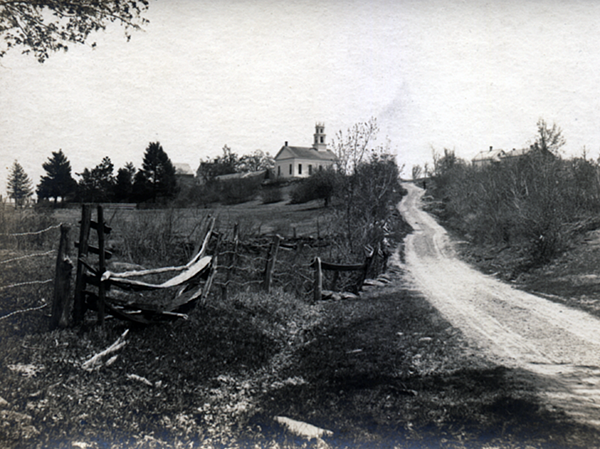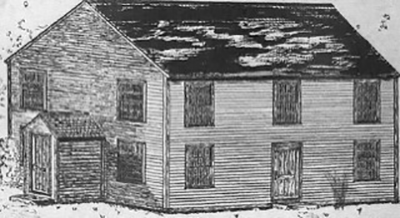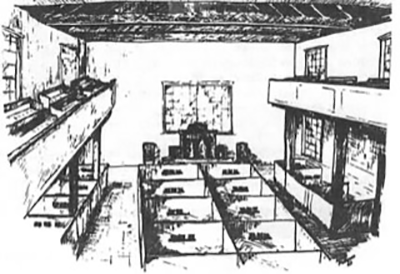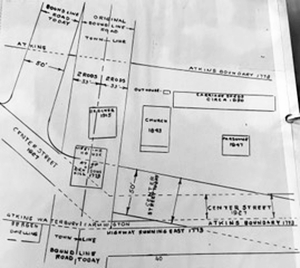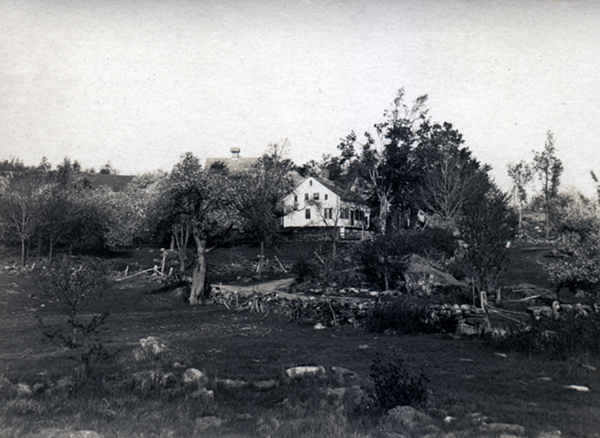|
|
||||||||||||
 |
 |
|
Wolcott Historical Society News - September 2023 By Florence Goodman I'd like to start this month's article with an interesting quote from Samuel Orcutt's book, "History of the Town of Wolcott (Connecticut) From 1731 to 1874." I think it helps us to understand why these early settlers trudged up the hills of Wolcott and its surroundings to establish their homesteads.
"In the settlement of Connecticut, and other New England States, the settlers made their homes first in the valleys and along the rivers and streams of water. After fifty to seventy years' experience of decimation from fevers and sickness, caused by the fogs and malaria in those lowlands, they began to climb the hills and mountains, and to make their homes where the sun rose before ten o'clock in the morning, and set after four o'clock in the afternoon; so the first settlers came into Wolcott, upon the hills, fifty-seven years after the settlement of Waterbury, and ninety-one years after the settlement of Farmington." These settlers traveled on Native American trails or paths from Farmington to Mattatuck, now Waterbury. The trail they traveled lay across the northwest corner of Wolcott and was probably the first road in our town, known as Spindle Hill Road. Even today as you travel this road it can be challenging; just imagine what it looked like over 250 years ago. As I have stated in many of my articles, the stamina and fortitude of these early settlers was amazing.
A great community knows its history! Our town has a wealth of rich history that started well over 250 years ago when several sturdy pioneers and their families ventured into its boundaries. John Alcott settled on Spindle Hill, Thomas Upson came up Southington Mountain and settled in the Hitchcock Lake area, Ebenezer Wakelee settled in the southwestern section in the Big Plains area near what is now Sharon Road, and Jacob Benson was believed to be the first settler in what is now the center of town known as Benson's Hill; receiving the name because he was the first to reside there. Benson's Hill started at the falls on the Mad River, across from where Pat's IGA is today and led to the Center of town. Benson operated a grist mill at the falls and kept a store at that Center on the hill. Benjamin Harrison later came from Branford and purchased 111 acres of land with a house and barn on the easterly side of Benson's Hill. These first settlers set the stage for those who followed and through their strength set the groundwork for our present-day town.
The first Ecclesiastical Society meeting took place on November 13, 1770, at the home of Mr. Joseph Atkins. Although the house is no longer standing it was located west of the present church. (This house should not be confused with another historic house located at 49 Center Street, the Josiah Atkins House (circa 1777). This house was originally owned by Lt. Josiah Rogers, who was not only in the Farmingbury Militia, but a founder in both the Farmingbury Society and its Parish. )The rules of this meeting carefully followed Colonial Law granted through the General Assembly and Courts. This grant formed the parish from the towns of Waterbury and Farmington and gave it the name Farmingbury. This meeting was important because it allowed residents to vote in the leaders that would guide the Society to procure a preacher, set a tax rate to raise money, set up a school committee and districts in the settlement and most importantly to build a meeting house. It was Joseph Atkins who was chosen to stick the stake for the meeting house. He not only served on the committee to build a meeting house but gave two acres of land for that purpose on the Bound Line Highway. Construction on the church did not start until April 1973.
It wasn't until November 18, 1773, that 30 members of the Farmingbury Parish signed the "Covenant of Confederation" that gave birth to the first Parish Church and Meeting House in our town. That first church stood facing south and the Green as well as on the line that divided the towns from which the parish was formed; half in Waterbury and half in Farmington. I have included an excellent sketch researched and drawn by John H. Washburne many years ago that shows exactly where that first church stood. I thought it was interesting that the church was placed exactly half in Waterbury and half in Farmington. If the structure was still standing today part of it would have sat on Center Street. It was a plain building without a steeple. The pulpit stood on the north side, opposite the front door with a double window above it. The custom in those days was for the pulpit to be built high and in front, and below it the seats for the deacons were placed. The front galleries extended around three sides with raised seats behind. The pews were designed like an old-fashioned box with numbers on the doors and members were seated according to their age, the elderly nearest the pulpit. At the south end between the stairways were high seats for young people who preferred them. There were also two other doors at each end of the church facing east and west. One might visualize a cross the way the pulpit, windows and doors were placed in the building. Remember, the Church rule was the law of the land in those days. The body of the church was painted white, and the roof red. Reverend Alexander Gillet was officially ordained the first preacher on December 29th of that year. This first church stood on Benson's Hill until December 11, 1839, when it was destroyed by fire. That original church is no longer standing, but the one that replaced it stands majestically on our Green today as a symbol of the strength of those forefathers who came before us.
So as our Congregational Church and town celebrate this the 250th milestone on September 8th, 9th and 10th try to remember the sacrifices, hard work and strength it took to survive during those colonial times. All are welcome to join in on this weekend celebration. There will be a variety of activities on the Green and surroundings for everyone to enjoy. The Wolcott Historical Society will have its Center School History Museum open on Saturday from noon to 4:00 and on Sunday from noon to 2:00. We hope to see you there!!
Postcard of Center Street to the Green. Benson's Hill started at the falls on the Mad River, across from where Pat's IGA is today and led to the Center of town.
A sketch of the "Original Meeting House" by Lisle Fleming. Joseph Atkins gave the two-acre site for the building on June 8, 1772. It was destroyed by fire in 1839.
An etching by Lisle Fleming of the inside of the Meeting House, which was full on Sundays. The singers sat in the gallery, nearly filling the front seats on three sides. The ladies were able to remove their bonnets for singing.
This is an excellent map/sketch researched and drawn by John H. Washburne many years ago that shows exactly where that first church stood.
This is an early postcard of the Josiah Atkins House at 49 Center Street. This house was originally owned by Lt. Josiah Rogers, who was not only in the Farmingbury Militia, but a founder in both the Farmingbury Society and its Parish.
To view past installments of the Historical Society News, click here. |
|
|
[Home]
[News]
[Purpose]
[Calendar]
[Museum]
[Membership]
[History]
[Contacts]
[Links]
All material at Wolcott Historical Society Web sites Copyright © 2000-2023 Wolcott Historical Society |
